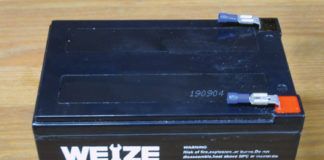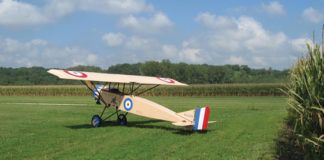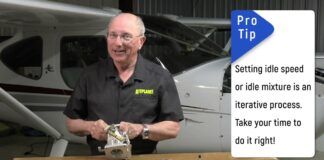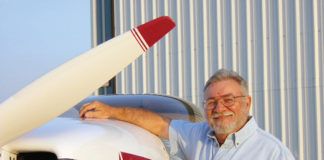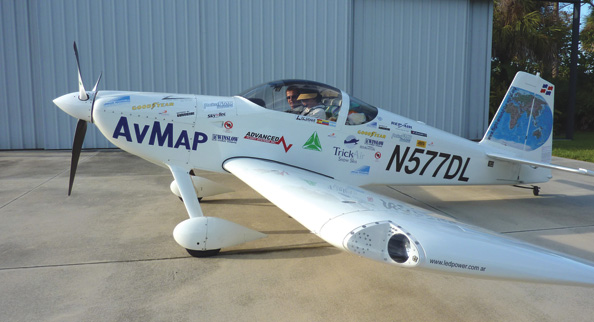
This story starts, for me anyway, at the end of a busy writing and editing week when my pilot-husband came back from an EAA chapter meeting to tell me that he’d invited guests to come and stay with us for a couple of days.
“This week?” I asked somewhat dumbfounded. I mean, the kids had just vacated the premises, rooms were in disarray, and I’d had no time to even sweep up the dog hair (we have a major shedder) that was routinely sifting across my tile floors. “Well, this weekend—they are really nice people—pilots, both,” he cajoled. “I’ll help clean up,” he finally offered, knowing exactly what to say to cinch the deal.
“You’ve already told them to come, I see,” I muttered with just a little sarcasm. “I’m sure it will be fine. Do I know them?” was my final question.
“They spoke tonight at the meeting—they’re flying around the world. They built their airplane. You’ll enjoy them,” he said, giving me a thank-you peck on the cheek. (See, I’m not that tough to bring around, contrary to the rumors out there.) I went back to work, and made a note to go grocery shopping and clean the house before the weekend.
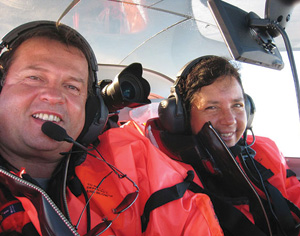
What’s not to like on such a journey?
A Life Less Ordinary
A couple of days and one small delay later a little white airplane speckled with sponsor decals rolled up the driveway and, when the engine stopped and the canopy popped open, a rather ordinary man and a woman hopped out.
Detlef Heun and Liliana Tagliamonte don’t strike you as the crazy type of aviators; in fact, on first glance they look absolutely normal. But don’t let that first impression fool you. These two, husband and wife, have been on an amazing odyssey with their airplane that began with a simple idea.
“We wanted to fly ourselves around the world,” Heun said. But looking at the route the two chose, it is clear that they don’t just want to go around the world, they want to conquer it. Their desired routing is a total of approximately 130,000 nautical miles (240,760 kilometers). That distance is about six times the circumference of the globe. Instead of just touching each continent, these two are hell-bent on exploring the aviation options, be they simple or complicated, in as many different countries as possible.
“We are visiting the small airports where we can put up a tent, and places where we can meet people and explore,” Tagliamonte said. “This trip is about being an aviation ambassador, really.” My husband was right when he said I’d like the couple. We tucked their airplane in the hangar and went inside for an adult beverage and a nice barbecue feast. After dinner, Tagliamonte broke out the computer and began to show us pictures from their journey.
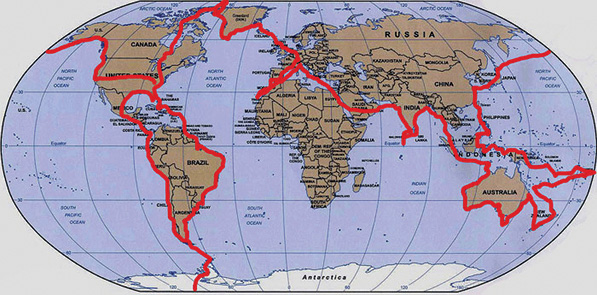
The route.
Pilot Training
These two came to flying from different perspectives. Heun began flying in Germany when he was quite young, and worked his way through gliders into powered planes and up. He trained in both Germany and the United States, and holds instructor ratings, with experience in a host of different aircraft, including some aerobatic designs. Tagliamonte was an open-ocean sailor, with at least four Atlantic crossings under her belt, so she knew a thing or two about being “out there alone.” She understands weather and wind, too. So flying, though a recent avocation for her, in many ways came pretty easily.
And building? Well, that was definitely a team effort. The two settled on a Van’s RV-7 as their airplane of choice because of its capabilities and wings they knew they could fill with fuel. They equipped it with a Lycoming IO-360 from Superior, Lightspeed dual electronic ignition, an Airflow Performance fuel-injection system and an MT three-blade, constant-speed propeller. Inside, they kicked things up a notch with an AvMap GPS, Pocket FMS, dual Advanced Flight EFIS 3500s with angle of attack, TruTrak DigiFlight II VSGV, Garmin GNS 430W, GMA 347, and because they were going where few modern airplanes go, an automatic direction finder and a high-frequency radio. Special equipment includes increased fuel capacity so they can tanker 84 U.S. gallons of fuel and TrickAir skis for landing on snow. N577DL started life in Germany, but was crated and shipped to the U.S., where the two worked on it for a year in a hangar at the Charlotte County Airport in Punta Gorda, Florida. Its first flight was on December 29, 2008.
The Airflow Performance injectors and the additional fuel were key to this RV-7’s task. By the time the engine was tuned and ready for the trip, it was burning just 5.5 gph in cruise, which gave the RV-7 the endurance it would need for a few of the longest legs, without having to add temporary fuel tanks. They didn’t waste any time once their 40 hours were flown off and the kinks (yes, there were a few) were ironed out. On March 30, 2009, they went south, first through the Bahamas, the Dominican Republic and on to South America, where they hoped to make it all the way to the South Pole. Then fate intervened.
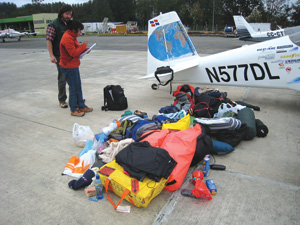
Clearing Chilean customs.
Delayed, but Undaunted
They left the airplane in South America for a trip back to Germany, and while there it was discovered that Tagliamonte needed surgery to remove a carcinoma. After a five-month recovery, they returned to Buenos Aires, Argentina, and continued their journey. But Antarctica was not to be, at least not on this section of the trip. A problem with the ignition system forced the airplane down at a small strip called Azul, where they waited on parts in the company of some wonderful kindred spirits. Tagliamonte smiled when she talked about their change in itinerary; she hasn’t given up on visiting the South Pole.
The entire winter and spring of 2010 had the RV-7 popping up on television news channels as the two ambassadors rounded the tip of South America and headed north again, through Chile, Peru and Ecuador. They even visited the Galapagos Islands, which is a nice chunk of Pacific Ocean to bite off in a single-engine aircraft.
“The people we’ve met and the friends we have made are what make this trip worthwhile,” Tagliamonte said. “Often we slept in our tent, but so many times wonderful people would invite us into their homes and share their lives with us. Pilots are great people.”
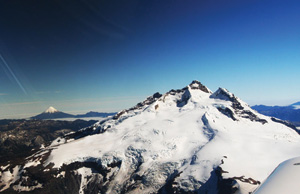
Mt. Tronador in Argentina.
It was late by the time the two had showed us this much of their trip, and we knew they were heading out to begin circumnavigating the North American continent in the morning, so we packed up the story right there. But I know it’s gone on because I’ve been following Tagliamonte’s logs at www.flight-around-the-world.org. If you were at Oshkosh, you might have seen them with their airplane right in front of the Brown Arch at airshow center. They were camping not too far away.
Since then they’ve made it all the way to Aurora, Oregon, and I’m guessing they were thinking they’d give their airplane a little homecoming by showing up where the kit was originally manufactured. Considering that they are less than halfway through their journey, the best I can do from my desk is to wish them Godspeed. I’ll keep reading those online logs with envy, because there is no doubt that from the confines of my little office, I wish I were there!
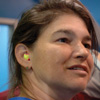
![]()
Amy Laboda has taught students how to fly in California, Texas, New York and Florida. She’s towed gliders, flown ultralights, wrestled with aerobatics and even dabbled in skydiving. She holds an Airline Transport Pilot rating, multi-engine and single-engine flight instructor ratings, as well as glider and rotorcraft (gyroplane) ratings. She’s helped with the build up of her Kitfox IV and RV-10.


